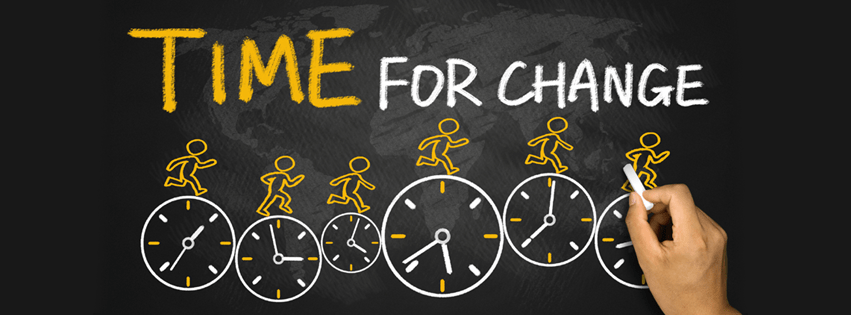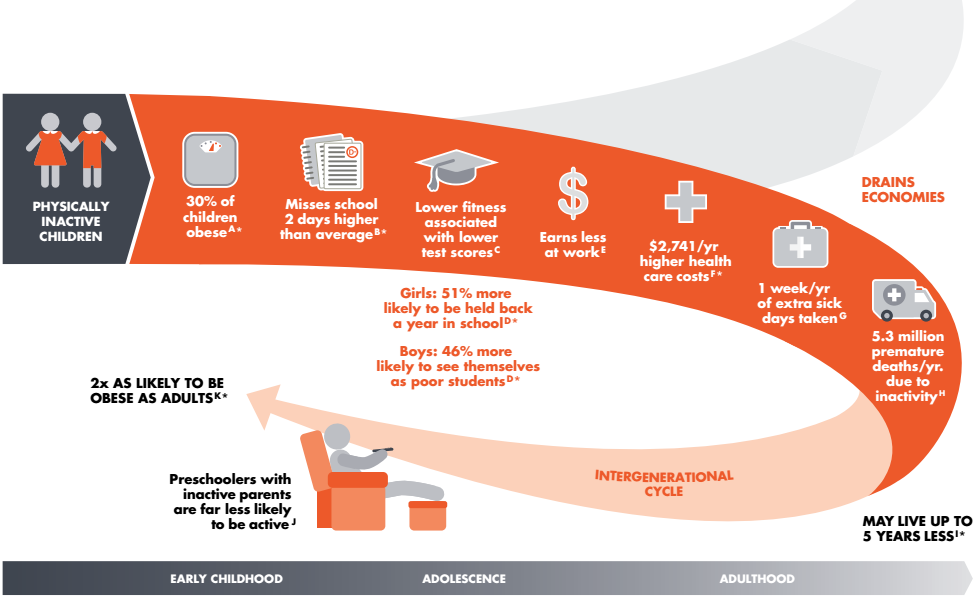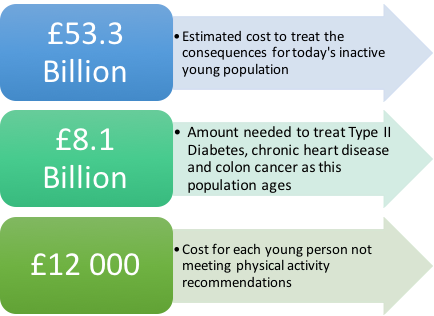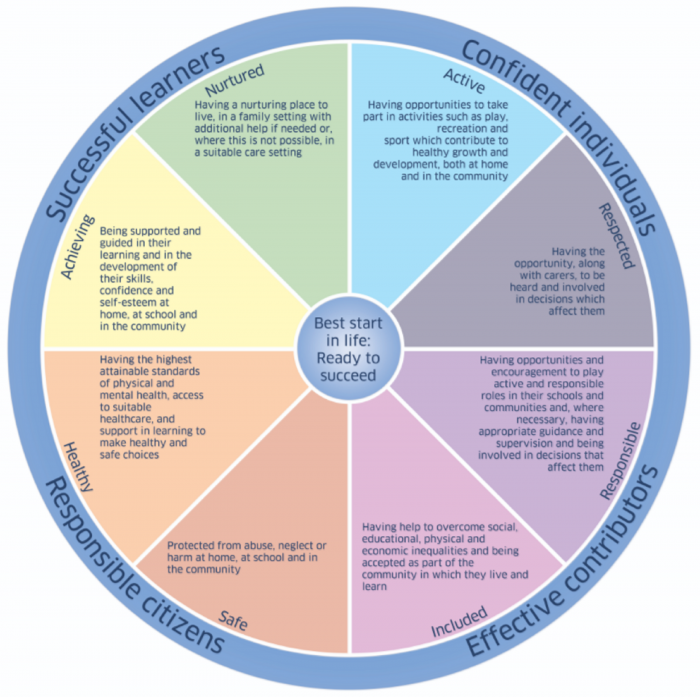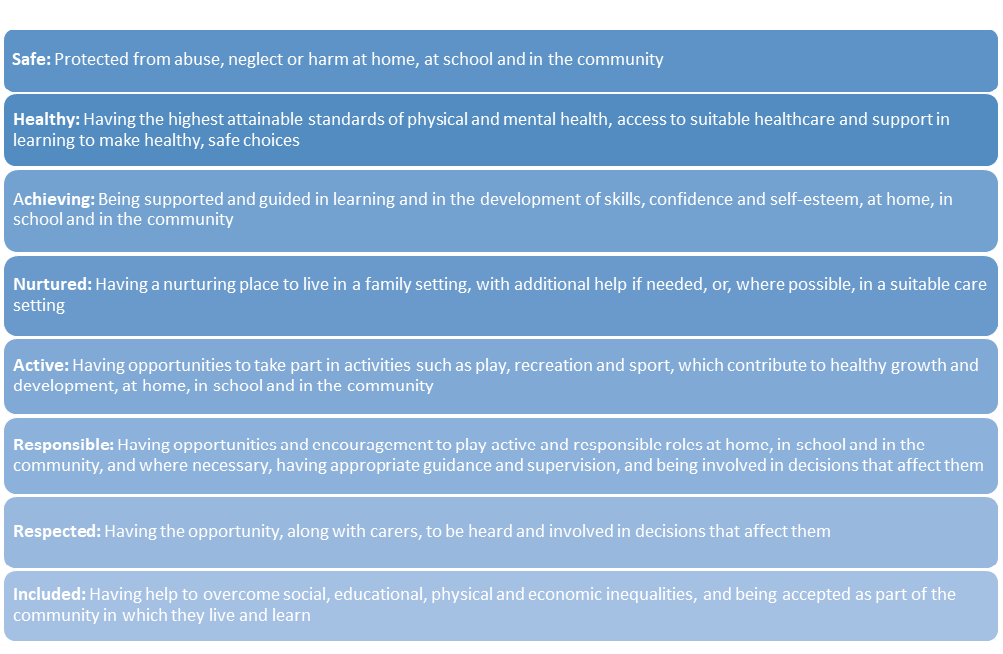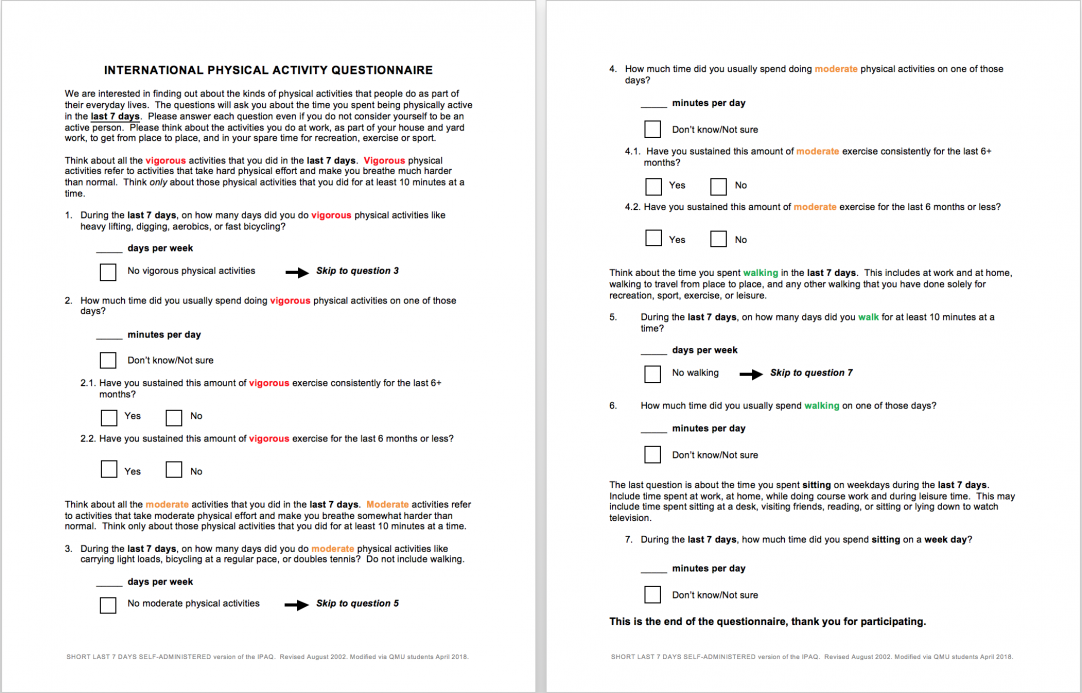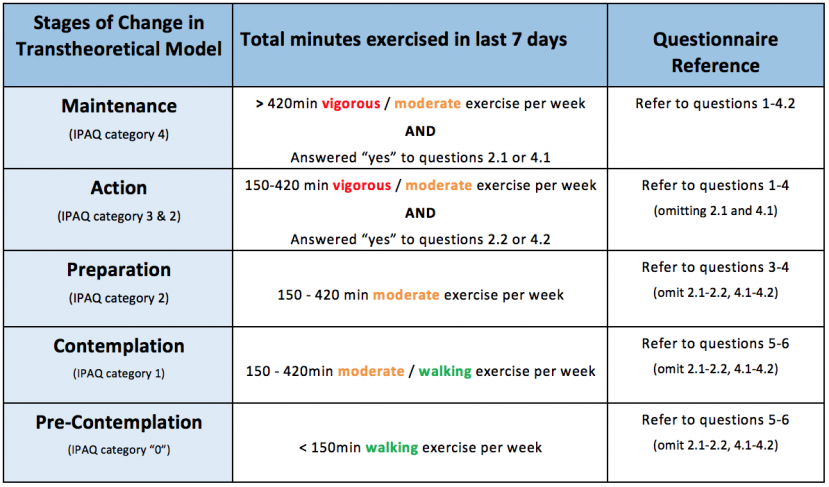Promoting Active Living in Young People Through Behaviour Change: Difference between revisions
No edit summary |
No edit summary |
||
| Line 8: | Line 8: | ||
== What is the aim of this Wiki? == | == What is the aim of this Wiki? == | ||
Physiotherapists are well educated in interventions aimed at increasing levels of physical activity in young people [ ref---]. Research in the area of increasing PA is well established, however PA interventions aimed at maintaining an active lifestyle is an emerging area. Physiotherapists can therefore utilize this resource to facilitate and support active living behaviours in young people so that this behaviour is maintained into adulthood.[[File:Time for change.png|frame]]This Wiki resource incorporates a behavioural change framework that can be utilised for the larger young population, delivered in different community settings. This Wiki will focus on the ttm [[ref] of behaviour change, which categorises individuals into various stages, dependent on their physical activity levels. A modified questionnaire has been developed within this resource to assist practitioners in identifying which stage of the TTM the young population is in. This categorization is based upon the amounts of vigorous, moderate or walking activities performed within their last week. The physiotherapists can use this knowledge to identify and build upon the individuals’ or groups’ strengths to encourage them to maintain active living behaviour into adulthood. | Physiotherapists are well educated in interventions aimed at increasing levels of physical activity in young people [ ref---]. Research in the area of increasing PA is well established, however PA interventions aimed at maintaining an active lifestyle is an emerging area. Physiotherapists can therefore utilize this resource to facilitate and support active living behaviours in young people so that this behaviour is maintained into adulthood.[[File:Time for change.png|frame|631x631px]]This Wiki resource incorporates a behavioural change framework that can be utilised for the larger young population, delivered in different community settings. This Wiki will focus on the ttm [[ref] of behaviour change, which categorises individuals into various stages, dependent on their physical activity levels. A modified questionnaire has been developed within this resource to assist practitioners in identifying which stage of the TTM the young population is in. This categorization is based upon the amounts of vigorous, moderate or walking activities performed within their last week. The physiotherapists can use this knowledge to identify and build upon the individuals’ or groups’ strengths to encourage them to maintain active living behaviour into adulthood. | ||
== Learning Outcomes == | == Learning Outcomes == | ||
| Line 39: | Line 39: | ||
== Economic implications of physical inactivity == | == Economic implications of physical inactivity == | ||
[[File:Economic Implications 1.png|thumb| | [[File:Economic Implications 1.png|thumb|434x434px|Figure 5: Estimated healthcare costs (measured in 2013 prices) for the young population aged 10-25 whom are currently failing to meet recommendations for physical activity [16AM]]] | ||
Establishing routine physical activity as an adolescent is associated with an increased probability to continue this behaviour into adulthood and a reduced risk of disease [15AM]. However, with nearly half of young people aged 10-24 not achieving the recommended physical activity guidelines [17SA], the healthcare costs to communities and the NHS are under strain. In Scotland, physical inactivity causes 2500 deaths per year and costs the NHS £91 million per year [17AM]. In the UK, the levels of physical inactivity in young people will result in predicted diseases, decreased quality of life and reduced lifespan. The economic costs of these anticipated morbidities are estimated in Figure 5. | Establishing routine physical activity as an adolescent is associated with an increased probability to continue this behaviour into adulthood and a reduced risk of disease [15AM]. However, with nearly half of young people aged 10-24 not achieving the recommended physical activity guidelines [17SA], the healthcare costs to communities and the NHS are under strain. In Scotland, physical inactivity causes 2500 deaths per year and costs the NHS £91 million per year [17AM]. In the UK, the levels of physical inactivity in young people will result in predicted diseases, decreased quality of life and reduced lifespan. The economic costs of these anticipated morbidities are estimated in Figure 5. | ||
If the total number of young people meeting physical activity guidelines could increase by only 1%, the UK could save £0.8 billion. Figure 6 displays the viable economic savings associated with young people’s increase in physical activity. | If the total number of young people meeting physical activity guidelines could increase by only 1%, the UK could save £0.8 billion. Figure 6 displays the viable economic savings associated with young people’s increase in physical activity.[[File:Economic Implications 2.png|thumb|439x439px|Figure 6: Potential savings associated with total percentage increase in the number of today’s adolescent population meeting physical activity recommendations. Prices measured in 2013 prices.|none]] | ||
== Benefits of physical activity in young people: == | == Benefits of physical activity in young people: == | ||
| Line 199: | Line 197: | ||
== Modified IPAQ-SF Scoring System into the Transtheoretical Model == | == Modified IPAQ-SF Scoring System into the Transtheoretical Model == | ||
The following table depicts the marking criteria for the identification of behavioural change stages in the transtheoretical model. | The following table depicts the marking criteria for the identification of behavioural change stages in the transtheoretical model. | ||
[[File:Modified IPAQ-SF Scoring System.png|left|thumb| | [[File:Modified IPAQ-SF Scoring System.png|left|thumb|829x829px|Table --- : The modified IPAQ-SF Scoring system for behavioural change stages in the transtheoretical model]] | ||
Instructions on determining the stage of behaviour change: | Instructions on determining the stage of behaviour change: | ||
Revision as of 13:54, 14 April 2018
Original Editors - Add your name/s here if you are the original editor/s of this page.
Top Contributors - Ronan Mac Cann, Lee Pettett, Sammy Anjum, Arden Metford, Kim Jackson, Lucinda hampton, Lee Krol, Rucha Gadgil, Rachael Lowe and Brian McGowan
Introduction[edit | edit source]
The physical and mental behaviour of today’s adolescent generation are determinants of their growth and development, now and throughout their lifespan [15AM, 13 SA]. Technological advances of today’s society have contributed to sedentary lifestyles, causing young people to have an increased body weight and body mass index (BMI) than from one generation earlier [2AM]. The gradual increase of routine sedentary behaviour and physical inactivity is a major contributor to chronic health conditions and is strongly correlated with the diagnosis of these diseases [6AM, 27SA]. This trend is at risk for continuing with today's young generation, as research suggests that the levels of physical activity decreases between the ages of 11-15 [IB5].Globally, physical inactivity is the fourth leading risk factor for mortality, causing 3.2- 5 million deaths annually [9SA, 10SA, 14AM]. While many of these chronic diseases are identified in adulthood, research suggests that the development of these conditions originate in childhood and adolescence [4AM, 5AM]. Furthermore, young people may have a less impressionable attitude towards their body image than adults, which may provide less resistance with behavioural change interventions [12AM, 13AM]. Therefore, the promotion of healthy behavioural habits must be learned during adolescent years, which will help carry forward the same behaviour into adulthood. Behaviours of active living established in early years can provide the greatest impact on maintaining these positive habits across one’s lifespan and influence mortality and longevity [3AM, 11 AM].
What is the aim of this Wiki?[edit | edit source]
Physiotherapists are well educated in interventions aimed at increasing levels of physical activity in young people [ ref---]. Research in the area of increasing PA is well established, however PA interventions aimed at maintaining an active lifestyle is an emerging area. Physiotherapists can therefore utilize this resource to facilitate and support active living behaviours in young people so that this behaviour is maintained into adulthood.
This Wiki resource incorporates a behavioural change framework that can be utilised for the larger young population, delivered in different community settings. This Wiki will focus on the ttm [[ref] of behaviour change, which categorises individuals into various stages, dependent on their physical activity levels. A modified questionnaire has been developed within this resource to assist practitioners in identifying which stage of the TTM the young population is in. This categorization is based upon the amounts of vigorous, moderate or walking activities performed within their last week. The physiotherapists can use this knowledge to identify and build upon the individuals’ or groups’ strengths to encourage them to maintain active living behaviour into adulthood.
Learning Outcomes[edit | edit source]
Add your content to this page here!
How to use the resource pack[edit | edit source]
Add your content to this page here!
Background[edit | edit source]
What is Active Living?[edit | edit source]
Add your content to this page here!
Epidemiology, physical activity and sedentary behavior:[edit | edit source]
- Research suggests that on average 39% of adults in the UK are not physically active [8 SA]. Physical inactivity causes 3.2-5 million global deaths annually and is the 4th leading risk factor for global mortality [9 SA, 10 SA, 14AM].
- Sedentary behaviour and physical inactivity is strongly correlated to the diagnosis of many chronic diseases such as type 2 diabetes, cardiovascular disease and obesity [27 SA]
- Nearly half of the young population in the UK are sedentary apart from school activities [12 SA,14 SA, 15 SA]. Common sedentary activities include: screen-based sedentary behaviour, social sedentary behaviour, TV-viewing, homework and academics and lastly motorized transport [15 SA].
- It is predicted that the 4.1 million children and young people who are obese and overweight globally are likely to remain obese and overweight into adulthood leading to greater risk of developing non-communal diseases such as diabetes and cardiovascular conditions at a younger age [10 SA, 13 SA]
- 13% of the youth aged between 11-15 year olds in England are not meeting the physical activity recommendations [14 SA, 16 AM].
- Increased sedentary behavior has been shown to greatly affect the health outcomes such as increased risk of obesity rates, lowered cardiorespiratory fitness and lowered insulin sensitivity in young people aged between 11-18 years old [16 SA, 7 AM, 9 AM, 9 AM, 10 AM]. However, alarmingly physical activity levels tend to drop off from ages 11-15 in most european countries (IB5)
Justification for the emerging role within Physiotherapy[edit | edit source]
Add your content to this page here!
Economic implications of physical inactivity[edit | edit source]
Establishing routine physical activity as an adolescent is associated with an increased probability to continue this behaviour into adulthood and a reduced risk of disease [15AM]. However, with nearly half of young people aged 10-24 not achieving the recommended physical activity guidelines [17SA], the healthcare costs to communities and the NHS are under strain. In Scotland, physical inactivity causes 2500 deaths per year and costs the NHS £91 million per year [17AM]. In the UK, the levels of physical inactivity in young people will result in predicted diseases, decreased quality of life and reduced lifespan. The economic costs of these anticipated morbidities are estimated in Figure 5.
If the total number of young people meeting physical activity guidelines could increase by only 1%, the UK could save £0.8 billion. Figure 6 displays the viable economic savings associated with young people’s increase in physical activity.
Benefits of physical activity in young people:[edit | edit source]
Add your content to this page here!
Barriers and facilitators to physical activity:[edit | edit source]
Add your content to this page here!
Ethical considerations when working with young people[edit | edit source]
- Government Legislation and Policies For Working with Young People:
- Getting it Right for Every Child
- Ready to Act Plan
-Children and Young People (Scotland) Act 2014
- Safeguarding Young People
- Informed Consent
- Confidentiality
Knowledge and understanding of relevant legal frameworks, including local policies are essential for Physiotherapists who work with young people to ensure they work effectively and deliver services appropriately (LP 1).
Getting it Right for Every Child
Central to the Children and Young People (Scotland) Act 2014 (LP 5), is the ‘Getting It Right for Every Child (GIRFEC)’ policy (LP 6). This policy states that all adults working with children and young people should ensure their actions support the best interest of children and young people through promoting, supporting and safeguarding wellbeing and reporting on wellbeing outcomes (LP 10)
- GIRFEC is a key part of the Scottish Government’s commitment to addressing inequalities and improving outcomes for children and the young through early intervention and prevention (LP 11)
- GIRFEC is underpinned by the recognised need for shared principles and values and a common language among practitioners who provide services for children and families (LP 12).
- GIRFEC is intended to be used by health practitioners to gather information about a child’s well-being to identify concerns and determine what support and action may be needed (LP 10)
The GIRFEC approach:
- Integrated Working: focuses on children, young people, parents and services they need working together in a coordinated way to meet the specific needs and to improve overall well-being.
- Child Focused: ensures the child or young person (and their family) are at the centre of decision-making and have appropriate support available to them.
- Well-being of children: focuses on a child or young person’s overall well-being such as how safe, healthy, achieving, nurtured, active, respected, responsible and included.
- Early Interventions: focuses on tackling the needs of a child and young person early, aiming to ensure the needs are identified as early as possible to avoid larger concerns and problems to develop.
The well-being of children and young people is at the heart of GIRFEC (LP 11) The approach uses eight areas of well-being, SHANARRI indicators, which represent the basic requirements for all children and young people to grow and develop and reach their full potential. The eight indicators are illustrated in below in the well-being wheel of GIRFEC (LP 6).
Ready to Act Plan:
The Ready to Act Plan (LP2) delivers one of the actions from the AHP National Delivery Plan, where allied health professionals (AHPs) act as Agents of Change in Health and Social Care (LP 3). Ready to Act (LP2) will contribute to the developing Active and Independent Living Improvement Programme (LP 4). The plan sets out five key ambitions for AHP services for young people based on the outcomes young people, their parents, carers, families and stakeholders reported that mattered to their lives. The key ambitions are illustrated in the table below:
| Issue | Ambition |
|---|---|
| Participation and Engagement | Children's and young people's views will be asked for, listened to and acted upon to improve individual and environmental well-being outcomes and AHP services |
| Early Intervention and Protection | Every child and young person will have the best start in life, with AHP services using asset based approaches to aid prevention through universal services and supportive nurturing environments |
| Partnership and Integration | Children and young people, their parents, carers and families will have their well-being outcomes met at the most appropriate level through the creation of mutually beneficial, collaborative and supportive partnerships among and within organisations and communities |
| Access | All children and young people in Scotland will have access to AHP services as and when they need them at the appropriate level to meet their well-being needs, with services supporting self-resilience through consistent decision-making |
| Leadership and Quality Improvement | Children and young people, their parents, carers and families will experience services that are led by AHPs who are committed to a leadership and quality improvement approach that drives innovation and the delivery of high quality, responsive, child centred care |
The Ready to Act Plan (LP 2) is the first children and young people’s services plan in Scotland to focus on the support provided by AHPs. The plan sets the direction of travel for the design and delivery of AHP services to meet the well-being needs of young people. It is underpinned by the Children and Young People (Scotland) Act 2014 (LP 5), the principles of Getting it Right for Every Child (GIRFEC) (LP 6) and the United Nations Convention on the Rights of the Child (LP 7).
Children and Young People (Scotland) Act 2014:
The Children and Young People (Scotland) Act 2014 (LP 5) establishes a legal framework within which services create new and dynamic partnerships to support young people, their parents, carers and families to achieve meaningful wellbeing outcomes (LP 1, LP8). These outcomes include what has come to be known as the SHANARRI indicators of well-being. AHPs, including Physiotherapists, play a key role in young people achieving well-being outcomes through developing their resilience and creating protective environments to enable participation and self-reliance (LP 9).
**Summary of area to be inserted into here **
Safeguarding Young People:
Safeguarding is a term which is broader than ‘child protection’ and relates to the action taken to promote the welfare of children and protect them from harm (LP 1). Safeguarding is everyone’s responsibility.
Safeguarding is defined in Working together to Safeguard Children 2015 (LP 13) as:
- Protecting children and young people from maltreatment
- preventing impairment of children’s and young people’s health and development
- Ensuring that children and young people grow up in circumstances consistent with the provision of safe and effective care and
- Taking action to enable all children and young people to have the best outcomes
In order to safeguard and promote the welfare of children in Scotland, Physiotherapists should act in accordance with the following legislation and guidance:
- Children (Scotland) Act 1995 (LP 16)
- Protection from Abuse (Scotland) Act 2001 (LP 17)
- Protection of Children and Prevention of Sexual Offences (Scotland) Act 2005 (LP 18)
- Protection of Vulnerable Groups (Scotland) Act 2007 (LP 19)
- Children and Young People (Scotland) 2014 (LP 5)
The National Society for the Prevention of Cruelty to Children (NCPPC) (LP 20) offer links to the following documents for advice and guidance for health practitioners with concerns for children and young people:
- What to do if you’re worried a child is being abused: advice for practitioners (LP 21)
- Safeguarding children and young people from sexual exploitation (LP 22)
- Safeguarding children in whom illness is fabricated or induced (LP 23)
** Summary of what Physios need to know about Safeguarding
Informed Consent:
The position on consent in relation to children is complex (LP 20). It is important for Physiotherapists working with children to be familiar with literature, statutes, case law, professional guidance and department of health guidance on the ethical and legal aspects of children and young people’s consent (LP 1). The issue regarding capacity is of particular importance when dealing with children (LP 25). The law recognises broadly three stages of childhood with respect to consent:
- Children and young people who lack capacity- If the child does not have the capacity to give their own consent e.g. they are too young or do not understand fully what is involved, then a parent/ person with parental responsibility, or the Court, may give consent on the child’s behalf (LP 1)
- Children and young people with capacity: A child under 16 who has the capacity to make their own decisions may be referred to as ‘Gillick competent’ after the legal case that established children can make their own decisions in certain circumstances (LP 26).
- Children and young people over the age of 16: All 16-17 year olds with capacity are permitted by law to give their own consent to health interventions. (LP 27) Those children who are 16 or over on the date they attend for treatment do not need parental consent for Physiotherapy (LP 1). You should not share confidential information about 16-17 year olds with their parents, or others, unless you have specific permission to do so and/or you are legally obliged to.
According to Scottish law, children over the age of 12 are usually considered to be sufficiently mature to form a view and can have the legal capacity to consent to health interventions where in the opinion of a qualified health practitioner, the child is capable of understanding the nature and possible consequences of the intervention (LP 28)
This is a matter of clinical judgement and will depend on several things, including (LP 1):
- The age of the patient
- The maturity of the patient
- The complexity of the proposed intervention
- The likely outcome of the intervention
- The risks associated with the intervention
If the child or young person is not capable of understanding the nature of the healthcare intervention and its consequences, it is then advised to contact the child’s parent or guardian for consent to proceed with the intervention (LP 29). Although a young person is deemed capable of giving consent independently, it is still highly encouraged to seek consent from both the young person and their parents or guardians (LP 30; LP 31)
Confidentiality:
Confidentiality is of fundamental importance to young people as outlined in the United Nations Convention on the Rights of the Child (LP 7). Young people have the same rights to confidentiality as adults, however the duty to safeguard young people should come first (LP 32, LP 33, LP 44). When obtaining consent, confidentiality needs to be explained to young people in terms that they understand and that they are aware of events in which the Physiotherapist may be required to act on concerning information and pass it on to relevant organisations (LP 36). In addition, parents of young people may request access to the young person’s responses after undertaking a health intervention questionnaire or survey. There are strong ethical reasons why parents should not have access to what their child says on a questionnaire as young children may be harmed, embarrassed or punished based on the responses they have given (LP 37). Rather than giving parents access to responses, it may be beneficial to offer parents to view the questionnaire prior to it being completed (LP37) or to encourage parents to initiate discussions about the questionnaire with their children in a home setting (LP 38).
Current government strategies[edit | edit source]
The Scottish government was one of the first countries in the world to release a national physical activity strategy, by providing a broad framework and implementation plan, called Lets makes Scotland more active in 2003. (LK 5)
This 20 year strategy’s five year review acknowledged there had been progress made with the populations physical activity levels. It has been followed up more recently after the 2014 commonwealth games with the strategy A more active Scotland. (LK 6) This is an adaptation of the Toronto Charter for Physical Activity (2010) which is a gold standard tool. (LK 7)
When specifically looking at young people, the strategies aim is to create a long lasting change in physical activity levels through:
Communities services and facilities:
- More children will have opportunities for active and outdoor play
- More children will routinely take part in play, sport, or other forms of active recreation
- More children will have opportunities for active and outdoor play
- Urban and rural environments will be designed to increase physical activity
- 20 mph zones will be widely introduced in residential and shopping areas
Schools:
- Education staff have the appropriate knowledge and skills to promote increased physical activity
- All places of learning can demonstrate the use of their estate and green space for physical activity
- All places of learning can demonstrate that pupils, students and staff have increased levels of physical activity
- More children and students use active travel to get to their places of learning
This was to be achieved through legacies where it was reported over 50 had been launched at their in 2015 review. Legacies are part of the implementation plan, an example includes is a national week was held encouraging more women and girls into sport as females have been found to be less active than males (LK 8). The statistics also show young peoples physical activity have slightly increased both including and excluding the increased physical activity in schools. It is still, however, unclear the prevalence rate transferring onto a long-term active lifestyle as the adult physical activity level has not increased.
Health-Related Behaviour Change[edit | edit source]
Add your content to this page here!
Models of behaviour change[edit | edit source]
Add your content to this page here!
Proposed questionnaire for measuring physical activity[edit | edit source]
The following questionnaire is a modified version of the International Physical Activity Questionnaire short form (IPAQ-SF), comprisising of seven questions. The aim of this questionnaire is to assist in identifying which stage of the transteoretical model the adolescent participants are in. After the total minutes of vigorous, moderate or walking activites performed over the participant's last seven days have been calculated, the physiotherapist can utilise the marking scheme provided in table ----- to establish which stage of the transtheoretical model the participant is in. Although this modified IPAQ-SF is answered on an individual basis, this questionnaire may be administered in group community settings, resulting in small groups of participants allocated into their individual stages of behaviour change.
There is conflicting evidence for this assessment in adults, a large study investigating the reliability and validity in 12 countries found the instrument acceptable and as good as other questionnaires (LK 1). In contrast a systematic review found the IPAQ-SF typically overestimated physical activity and concluded as a weak measure (LK 2). The evidence is more robust with adolescents, as a significant correlation was found between the questionnaire and moderate vigorous physical activity recorded on an accelerometer however physical activity and sedentary time were both under reported (LK 3). Another study investigating adolescents also found the reproducibility and validity of the IPAQ-SF as an acceptable measurement for measuring physical activity (LK 4)
Modifications to the original IPAQ-SF (ref---) were performed by QMU students in April 2018. Alterations included asking the participant to record the total "minutes per day" of activities performed and excluding "hours per day". This was done on the basis that physical activity guidelines are calculated in minutes, not hours (ref-----), therefore simplifying the marking process for the physiotherapist, especially when fast calculation of multiple questionnaires are required. Additionally, questions 2.1, 2.2, 4.1 and 4.2 were added to facilitate a simple "yes" or "no" criteria for the scoring into the "maintenance" or "action" stages in the transtheoretical model.
Modified IPAQ-SF Scoring System into the Transtheoretical Model[edit | edit source]
The following table depicts the marking criteria for the identification of behavioural change stages in the transtheoretical model.
Instructions on determining the stage of behaviour change:
- Calculate total number of minutes exercised in the last 7 days for vigorous, moderate and walking intensities.
- Using the chart above, classify the participant into the corresponding Transtheoretical Stage of Change using the total number of minutes exercised in accordance to level of intensity.
- Please note that the participant may be placed into the “maintenance” or “action” phase if they answered yes to corresponding questions 2.1-2.2 or 4.1-4.2.
Behavioural change progression[edit | edit source]
Add your content to this page here!
Motivational interviewing[edit | edit source]
Add your content to this page here!
Conclusion[edit | edit source]
Add your content to this page here!
References[edit | edit source]
see adding references tutorial.
